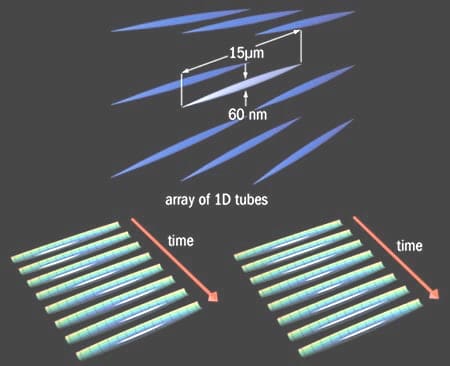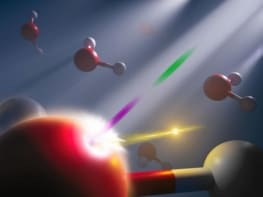Physicists have blurred the distinction between bosons and fermions by coaxing a one-dimensional gas of atoms into a Tonks-Girardeau gas for the first time. The creation of this novel quantum state, which was first predicted about 40 years ago, represents yet another breakthrough in the field of ultracold physics (B Paredes et al. 2004 Nature 429 277).

All atoms are either fermions or bosons depending on whether they possess half-integer or integer spin, and the difference between the two becomes clear when they are cooled to near absolute zero. Fermions obey the Pauli exclusion principle, which means that two of them cannot occupy the same quantum state, but no such restrictions apply to bosons. This means that large numbers of bosonic atoms can collapse into the same quantum ground state in a process known as Bose-Einstein condensation.
Belén Paredes of the Max Planck Institute for Quantum Optics in Garching and co-workers in Munich, Mainz, Paris and Amsterdam first made a Bose-Einstein condensate from rubidium-87 atoms. This condensate was then transferred to a two-dimensional optical lattice — an array of potential wells created by the interference of multiple laser beams — so that the atoms could only move in one dimension along narrow potential “tubes” (see figure).
When bosons are confined in this way, the repulsive interactions between them — which are normally weak in an ordinary three-dimensional cold gas — become important and tend to separate the atoms from one another. As a result, the bosons are prevented from occupying the same position in space and so effectively mimic the Pauli exclusion principle for fermions. To observe the Tonks-Girardeau regime, where this “fermionization” is even more pronounced, Paredes and co-workers introduced an additional optical lattice along the tubes that further increased the repulsive interactions between the bosons.
To confirm that a Tonks-Girardeau gas had been created the team measured the momentum distribution of the atoms in the tubes and found that it agreed with theoretical predictions. Paredes and co-workers now hope to tune the bosonic interactions in order to observe behaviour similar to that shown by correlated fermions. For instance, pairs of bosons might be coaxed into forming Cooper pairs like the electrons in a superconductor.



